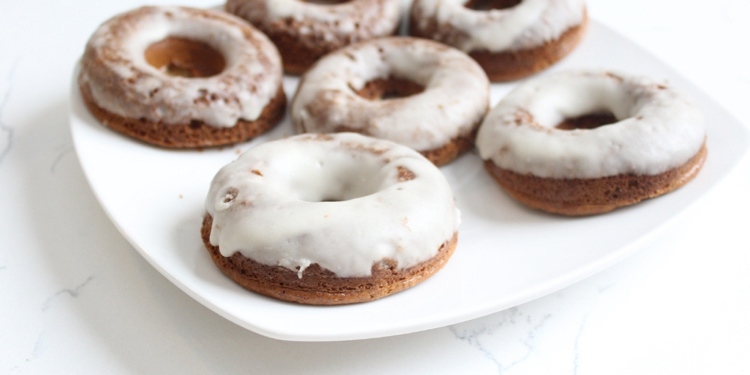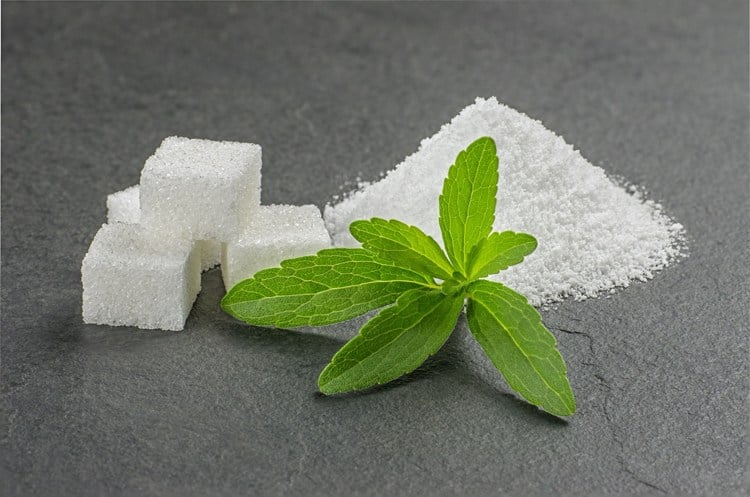Stevia as a sugar substitute for baking – you should pay attention to this
Whether you are on a diet or suffering from diabetes and want to enjoy something sweet, stevia is an ideal sugar substitute for baking. Stevia has been used as a sweetener in South America for hundreds of years. Steviol glycosides are the components that are responsible for the sweet taste of the plant. Stevia is 250 to 300 times sweeter than sucrose, but has no calories, carbohydrates or a glycemic index. Despite some issues that may arise when using stevia as a sugar substitute in baking, it can help you and your family eat less sugar while enjoying sweet treats. Stevia also keeps blood sugar levels stable, making it ideal for diabetics.
The role of sugar in baking

Table sugar is known for its sweetness but also for its high calorie and carbohydrate content. Sugar keeps getting a bad reputation and is blamed for many health problems like overweight and type 2 diabetes. But all cooks and bakers know that sugar is an invaluable ingredient so that baked goods not only taste good, they also have the right texture, color and volume.
Sugar does more than just taste good. In baked goods such as cakes, cookies and brownies, sugar creates a delicate texture and more lightness. It also helps bind moisture so your chewy chocolate chip cookies don't get dry. Sugar also helps with tanning (imagine a golden crust on a banana bread) and can crystallize to give baked goods crunch or texture. If you are a bread maker, you probably know that sugar feeds the leaven starter. When heated, sugar caramelizes and forms the basis for caramel sauce or flan.
Stevia as a healthy sugar substitute for baking

Stevia is good for baking, but it is important to know that the end result will not be like this with sugar. Sugar substitutes are very sweet, but they do not have the same properties or chemical composition as table sugar. For this reason, you should prepare for the following problems:
– Bright color – Sugar substitutes do not offer the same browning effect that sugar produces when baking. It is also important to note that stevia does not caramelize.

– Less volume – Cakes and muffins will not grow as well when baked if they are prepared with stevia.
– Texture differences – Baked goods with less or no sugar are usually drier and denser because the sweeteners do not absorb moisture.

– Differences in taste – Stevia has a specific aftertaste that reminds a little of licorice. This is a big disappointment for some people, while others like the taste. If the cake tastes unpleasantly bitter, you can simply leave it there for 1 day. The next day, the intense taste is neutralized.
– baking time – You may need to adjust the time it takes to bake a cake or cookies with stevia.
For best results, it is recommended to use at least 50 grams of sugar to aid browning and improve the texture of the dough. You may also need to choose a lower baking temperature and extend the baking time somewhat.
Replacing sugar with stevia – the right dosage

Stevia is naturally much sweeter than sugar. Only 1 teaspoon of real stevia has the sweetness of 200 grams of sugar. It is not easy to make recommendations on the correct amount of stevia when baking. Stevia products that are offered on the market are sometimes very different in terms of their sweetness.
Around 20 g of stevia powder is enough for a normal cake. 50 g stevia granulated sweet granulate corresponds to approx. 125 g table sugar. 75 g stevia sugar corresponds to 150 g normal sugar. In liquid form as a fluid, 20 drops of stevia correspond to 10 g of sugar. It's best to follow the sugar-stevia ratio instructions on the pack.
When baking with stevia powder, a few ingredient adjustments in the recipes are also required. Sugar plays an important role in the structure of your baked goods, so you need to make up for the lost mass with a filler.
Assemble the required volume

Use 75 grams of filler for every 200 grams of sugar replaced. Possible healthy fillers are: apple sauce, pumpkin puree or yoghurt. In some cases, fruit juice or water can also be used. If one of these fillers is already in use – for example, a banana in a banana nut cake – simply increase the amount of this ingredient in the recipe. The dough should flow down the spoon and be neither too liquid nor too chunky. Sugar helps make cakes lighter so that your finished stevia cake becomes thicker and possibly doughier. You can counteract this by adding a little more baking soda than the recipe requires.
Use of stevia as a sugar substitute in baking

There are a few adjustments that should be made to replace stevia with sugar. When baking cookies, stevia is best used in recipes for crispy cookie such as. Shortbread biscuits used. When baking flat biscuits with stevia, it's best to add some bulk and moisture in the form of pumpkin puree, applesauce, oatmeal, or nut butter. Otherwise, your cookies could end up becoming dry and crumbly.

At cake you should separate the egg whites and turn them into stiff tips to maintain the volume of the cake batter. Be sure to turn the cake over on a cooling rack after baking so that the volume is preserved and the cake does not collapse.
Yeast bread need sugar to rise. Replace only half of the sugar with stevia and increase the dose of baking soda to make up for the lack of sugar. In all cases, the oven must be preheated to the correct temperature beforehand.
Making glaze with stevia is not easy

Follow the same dosage to replace sugar in icings that you apply to your finished cake. However, some frostings are almost entirely based on sugar and the result with stevia would be poor. It is often more convenient to serve your cake with a low-calorie, low-fat whipped cream instead, or to prepare a healthy sauce made from stevia-sweetened fruit. A simple cream cheese frosting from 230 grams of cream cheese, 55 grams of butter, 1-2 tablespoons of yoghurt and 1 teaspoon of stevia usually works well.

Note: Although stevia does not contain calories and does not cause blood sugar fluctuations, it is still recommended to use it in moderation due to the excess calories in desserts. Other ingredients in the recipe can contribute to blood sugar spikes. the maximum permissible daily dose of stevia according to EU guidelines is 10 mg per kg body weight. A normal adult who weighs between 60 and 80 kilograms can therefore consume between 600 and 800 mg of stevia in concentrated form.
The post Stevia as a sugar substitute for baking – what you should look for appeared first on Deavita.com | Living ideas, design, hairstyles, make-up, lifestyle, health and beauty tips.





















